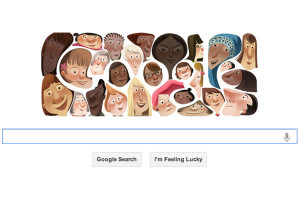Weekly Science Picks


Source: Google
Women. This is the theme of this edition of Weekly Science Picks. Yesterday, in case you missed it, was International Women’s Day. And it is important to note the achievements of women in careers such as teaching, neuroscience and engineering because women are still in a tightly contested race with the male counterpart. But who doesn’t enjoy a little competition?
The articles selected this week touch on another issue that is being hotly debated in the U.S. as of late – the question of if women can have it all. Many of you have perhaps heard that Sheryl Sandberg, COO of Facebook, has started down a path of empowering women with her new book released this week, “Lean In: Women, Work, and the Will to Lead”, accompanied by the creation of Lean In Circles, a social networking group to help women express issues of dealing with work and family. I’m not going to get into a debate about this right now, except to encourage some discussion of this topic among our readers, female or male, and think how it applies to life in the sciences.
This first pick deals with exactly this topic. It is a selection of women in science from around the globe, tackling incredible and exciting challenges in the lab, and outside of it with families.
From the frontline: 30 something science, What’s being female got to do with anything, ask the scientists who are starting labs and having kids by Heidi Ledford, Anna Petherick, Alison Abbott & Linda Nordling
“I never thought that my life had to be limited to anything, and I want to set that example for my daughter.”
Frances Arnold must be one of the coolest ladies in science. She does direct evolution, rewriting DNA to change the way organisms behave, developing new enzymes for the use of renewable energy.
The Director of Evolution, How Frances Arnold mutates DNA and breeds strange, new, and useful creatures by Jennifer Ouellette
Arnold grew up in Pittsburgh. Her father was a nuclear physicist who assured his daughter she could do anything, and she believed him. Fiercely independent, she lived on her own in high school, and worked as a cab driver and a cocktail waitress at a local jazz club to pay the rent, and protested the Vietnam War. Her grades suffered, and she wasn’t sure how easily she would get into a good college. But she did, perhaps benefiting because she was one of the only women to apply for a major in mechanical engineering.
This last selection is from Australian Science’s very own Danielle Spencer. Because where would we be without teachers to motivate and inspire, to instill that thirst for knowledge in students. This is a must read. Danielle, a fierce proponent for advancing the inclusion of girls in science, is working to instill in her students not only a love of science, but to also get them writing about it. The parents of one of her students, Rowena, agreed and we get a glimpse of a science experiment through the eyes of a curious and thoughtful pupil. Not only that, we can see the inclusive and innovative teaching style of Danielle. Because quite honestly, if we are to change anything about science and the place girls and women have at the bench or in the boardroom, it is going to start with teachers of this caliber.
The Story of a River by Danielle Spencer
Our adaptation was provided by Bunyaville Environmental Centre and tells the story of our local South Pine River. Our river begins its trek in the mountains of Mt Nebo and flows around farms, urban areas and through the great city of Brisbane before entering Moreton Bay. I added my own adaptation, finishing the story in the Great Pacific Garbage Patch.
Stay thirsty for knowledge, my friends. Stay thirsty.
Burnes K (2013-03-10 00:17:20). Weekly Science Picks. Australian Science. Retrieved: Dec 08, 2025, from https://ozscience.com/news/weekly-science-picks-22/
 Follow
Follow